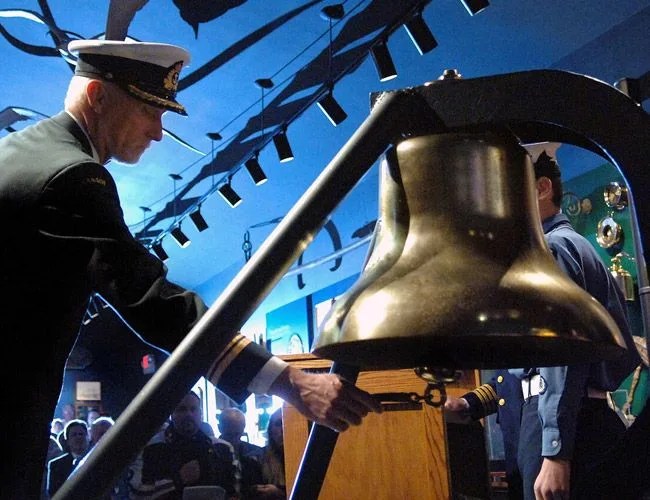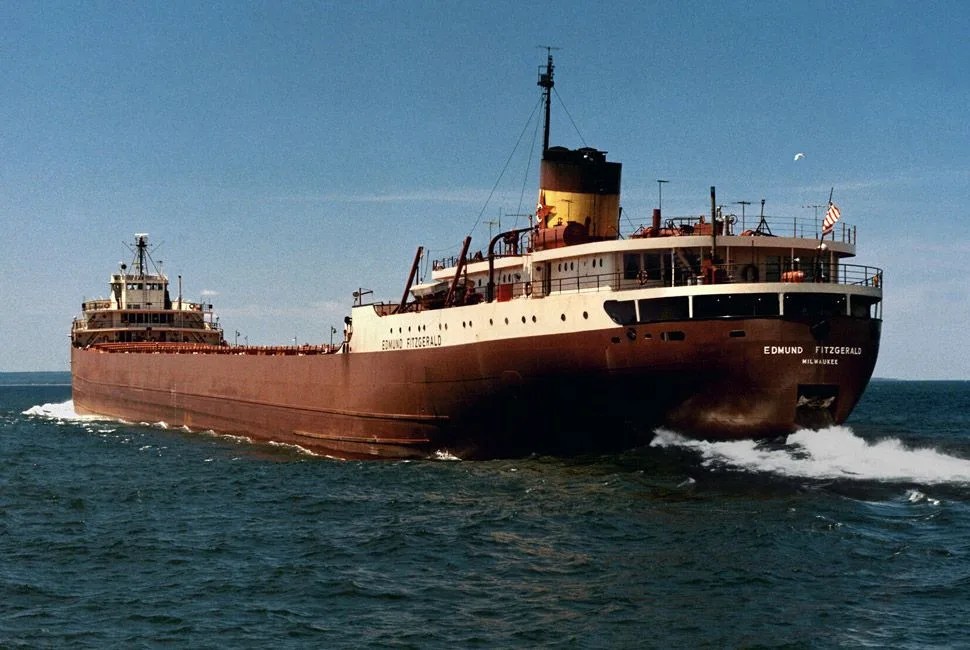It was 40 years ago that the Edmund Fitzgerald was lost in Lake Superior. Historian Christopher Winters recently co-authored a book, The Legend Lives On, commemorating the sinking and it will be available on December 12, 2015 on the Great Lakes Shipwreck Museum website ($50, 270 pages, over 300 photos).
The Ojibwe people call Lake Superior Gichi-Gami, or “Great Sea.” Given its immense size, the greatest of Great Lakes presents enough fetch on her west-to-east axis to generate waves as large as a four-story building. Historically, the “Witch of November,” as lake sailors call the equinoctial roiling of the jet stream, has produced the most violent weather systems on record — the Mataafa storm in November 1905, the “White Hurricane” of November 1913, the Armistice Day blow of 1940, and again in November 1975, a system forever linked with the loss of the giant iron boat Edmund Fitzgerald. Slashing through steep, 30-foot, short-period freshwater waves on the evening of November 10, 1975, the Fitzgerald‘s veteran captain reported some seemingly incidental topside damage and a “bad list.” At around 7:10 p.m. she vanished from the radar screen of the trailing steamer Arthur M. Anderson. There was no distress call, and no trace of her 29-man crew was ever found.
The largest ship ever lost on the Inland Seas was so devastated by her impact with the bedrock of the 530-foot deep lakebed that despite the forensic investigation of six major underwater expeditions (one spearheaded by no less an entity than the Cousteau Society in 1980), her loss remains as mysterious today as it was in 1975.

On the raw and unsettled morning of November 11, 1975, the rector of Old Mariners’ Church of Detroit, Reverend Richard Ingalls Sr., walked to the stone sanctuary on Jefferson Avenue, just a few miles north of where the Fitz would have unloaded her cargo of taconite iron ore pellets at the National Steel works on Zug Island. He climbed to the church’s bell tower, and after gathering himself, pulled the bell by hand 29 times for each sailor on the Edmund Fitzgerald.
An Associated Press reporter happened to be nearby, and surmised that the ringing was connected to the loss of the Fitzgerald. The reporter got the story of the bell tolling for the Fitzgerald‘s crew out on the wire directly, where it was picked up by the Los Angeles Times. Canadian songwriter Gordon Lightfoot was flying out of L.A. after a concert, and read the item after boarding a flight back to Toronto. An avid lake sailor himself, Lightfoot’s haunting ballad, “The Wreck of the Edmund Fitzgerald,” hit radio waves in August 1976. When released as a single, the song reached #1 on the Canadian charts and shot to #2 on the American Billboard Hot 100, freezing the event in six and a half minutes of contemporary culture.
He climbed to the church’s bell tower, and after gathering himself, the bell by hand 29 times for each sailor on the Edmund Fitzgerald.
